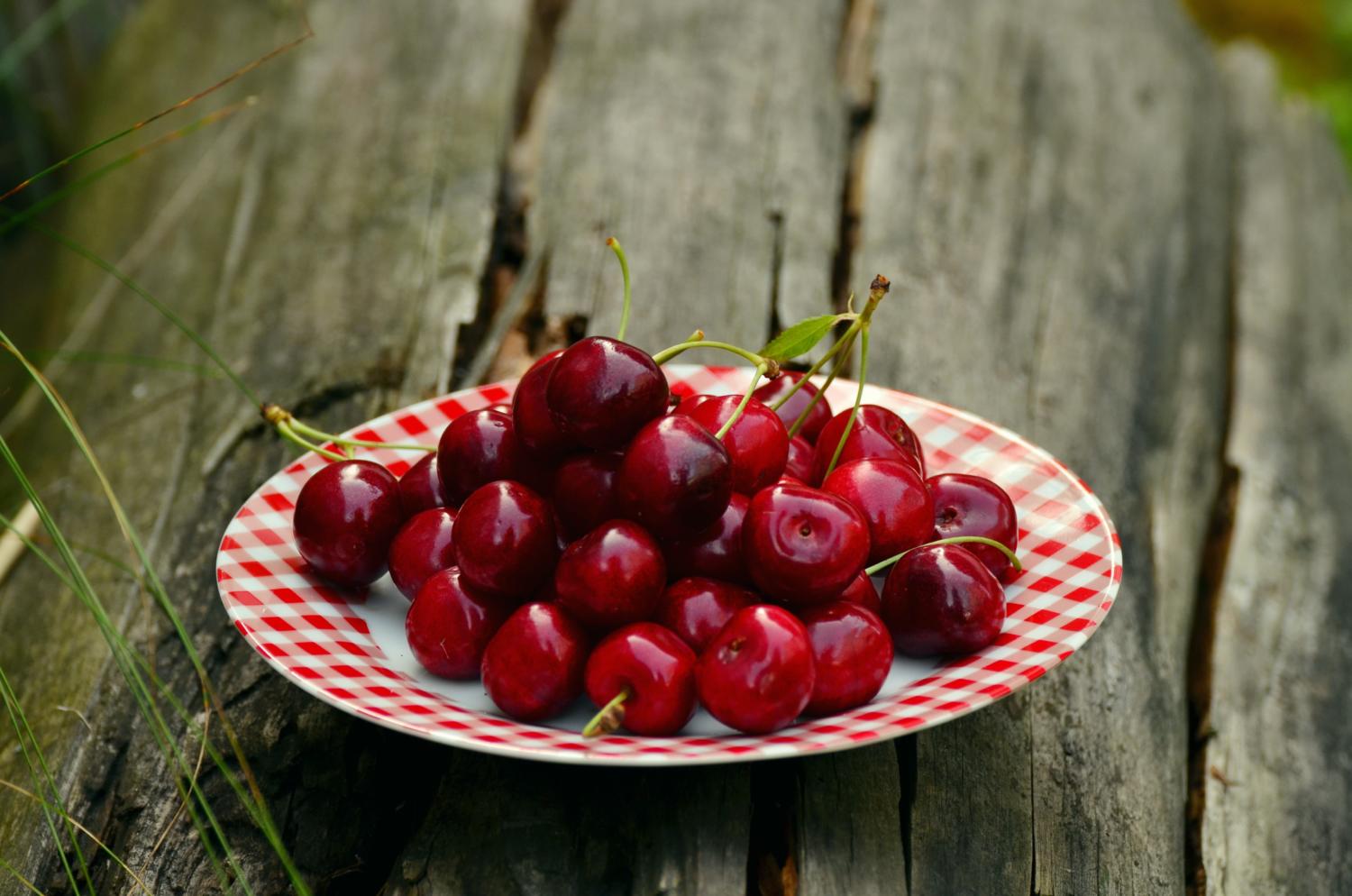
By Tony Chalcraft
If asked to choose between growing a sour or sweet cherry I’d always go for the former. It’s not maverick taste buds that drive this preference but the practicalities of cultivation. Producing a worthwhile crop of sweet cherries in a garden is difficult. Free-standing, sweet cherries often grow vigorously making tall trees that are difficult to pick. Fan training against a wall or fence is a better option but growth can still be unruly and hard to contain. Whether grown as a tree or fan, netting is essential if most of the crop isn’t to be taken by birds. And, even if birds can be fended off, there are other problems. Sweet cherry blossom is prone to spring frost damage while blackfly aphis often disfigures and stunts new growth. To top it all, any fruit that does survive often splits as it ripens.
Sour cherries aren’t immune to some of these problems but, on the whole, are much easier to grow and far more likely to provide a worthwhile harvest. Fresh sour cherries seldom feature in shops so, in case you’ve never encountered them, a sour or ‘acid’ cherry is one generally considered too astringent to eat uncooked. In the UK the variety of sour cherry grown is nearly always Morello. Compared to most sweet cherries this is a far more compact and easily managed tree. It lends itself to fan-training and, unlike a sweet cherry, will grow and fruit well in situations where there’s not much sunshine. What’s more, while the cherries may be sour they turn a glossy and tempting deep burgundy, almost black, colour when fully ripe. In the York area, this is usually early August.
I’ve several Morello cherries. These are trained in a rough fan shape using a basic post and wire framework in front of solid fences. This setup means the fruit can be protected against bird theft by draping old net curtains over the trees secured to the wires by clothes pegs. Standard garden netting could also be used for protection but in my experience, probably because it makes the ripening cherries more visible, this just incites birds to greater efforts at plunder.
Although most Morello trees are fan trained, its compact habit means it is about the only cherry suitable for container growing. It is also self-fertile, that is it doesn’t need a pollinating ‘friend’ of a different cherry variety to set fruit. Pruning, which should be carried out in summer as with all stone fruit, is relatively straightforward. Further, and sometimes contradictory advice is available online, but the key point to remember is that fruition often occurs on short young shoots produced the previous summer. On my established fan-trained trees this means pruning, which I carry out after picking, mainly entails cutting back old shoots that have fruited leaving the younger ones to carry cherries next season.
As well as being the easiest cherry to grow, the Morello has multiple culinary uses. It retains flavour better than sweet cherries when cooked for dessert and makes the best of all cherry jams. It can also be used for savoury purposes or even to make a liqueur (traditionally, kirsch was distilled from Morello cherries). And, of course, there’s a cherry pie or, better still as far as I’m concerned, Morello cherry clafoutis.









Anna
11 Apr 2025 at 08:28Hello, in what month does Morello cherry ready and can I buy fresh, not frozen, sour cherries from you?
Add a comment